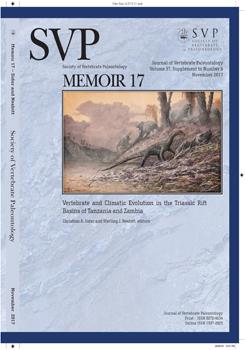A partial hind limb (femur and tibia) from the Triassic Lifua Member of the Manda Beds (Tanzania) is recognized as a new morphotype of kannemeyeriiform dicynodont. The femur of this specimen is the largest known dicynodont postcranial element from the Manda Beds and indicates an animal nearing the size of the Late Triassic Stahleckeria potens from Brazil and Namibia. This specimen also resembles both Stahleckeria and the related Argentine stahleckeriid Ischigualastia in having an unusually elongate, straight femoral shaft and a massive and bulbous femoral head, but it differs in its compact distal end of the femur and the relative gracility of both its femur and tibia. The recognition of this specimen as a novel form of Manda dicynodont indicates that as many as six distinct kannemeyeriiforms are present in the mid-to-upper Lifua Member fauna, equaling or exceeding the species richness of previously known Laurasian faunas and substantially exceeding the richness of coeval Gondwanan faunas.
How to translate text using browser tools
1 November 2017
Novel Hind Limb Morphology in a Kannemeyeriiform Dicynodont from the Manda Beds (Songea Group, Ruhuhu Basin) of Tanzania
Christian F. Kammerer,
Kenneth D. Angielczyk
ACCESS THE FULL ARTICLE





